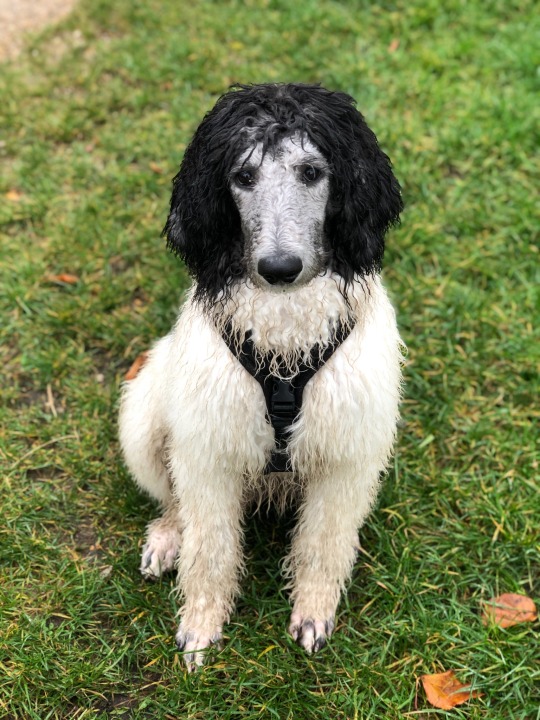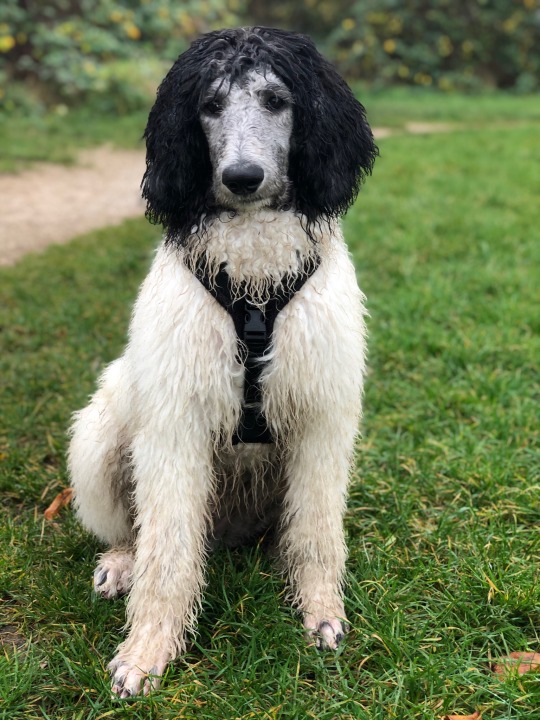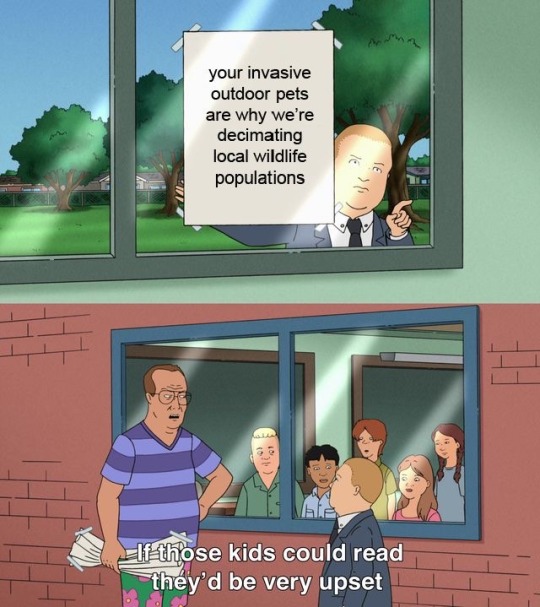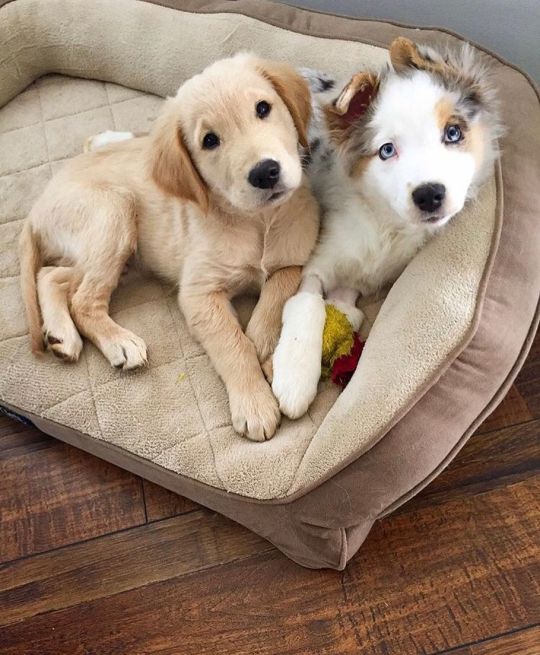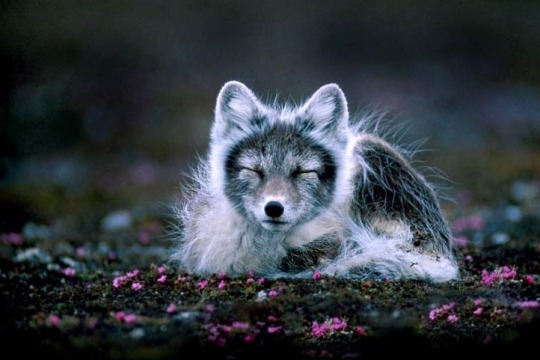Text
Feather destructive behaviour in parrots
(I’m sure everyone on birblr knows all about FDB, but I wrote this up for one of my vet med school assignments and thought I’d share since I haven’t posted in a while because of finals!)

Feather destructive behaviour, also known as “feather-plucking” or “feather-picking”, is a common problem in which captive parrots chew on, damage, and/or pull out their own feathers. Affected areas usually include the neck and breast regions, but can involve feathers on any body part that the parrot can reach with its beak. If left unchecked, parrots may also progress to mutilating their skin. This compromises the ability of a parrot to regulate their body temperature, which can lead to skin infections or other severe secondary problems.
Feather destructive behaviour is generally caused by medical or behavioural factors. Medical causes are most often related to skin and feather health, but can include other physical illnesses related to an inappropriate diet, poisoning, or infection. To rule out any of these causes, veterinarians perform comprehensive physical examinations and laboratory diagnostics to test the parrot’s blood and droppings. If the results of the exam and testing are unable to suggest a clear medical cause, then behavioural causes must be considered. With behavioural causes, stress often lies at the root of feather destructive behaviour, and can be caused by boredom, sleep deprivation, sexual frustration, or anything else in the environment that the parrot perceives to be persistently distressing.
Boredom, or a lack of physical and mental stimulation, can be attributed to a lack in number or variety of appropriate toys that encourage natural parrot behaviours. It is ideal to provide multiple toys within the cage and to rotate them on a weekly basis to ensure that a parrot stays interested and does not get tired of them. Alternatively, removing a toy that the parrot is especially attached to can also be stressful. Toys that encourage foraging behaviour (i.e., hiding pellets or treats) allow the parrot to work for its food and keep it occupied for longer periods. Foraging decreases the chances that a parrot will spend its spare time biting and chewing at its feathers. Owners can even opt to slowly switch from feeding their parrot all of its daily food in a bowl to hiding it inside foraging toys. Another form of mental stimulation for parrots includes training. Parrots are very intelligent and can be taught many different “tricks” and behaviours. Training sessions are another opportunity for a parrot to keep itself busy and figure out alternative ways of obtaining food.
A lack of social interaction, either with the parrot’s favourite human(s) or another bird, can also be a contributing factor in feather destructive behaviour. If a parrot must be left alone in its cage for hours at a time (i.e., while the owner is away at work), leaving the television or radio on at a quiet volume may help keep it stimulated and entertained. For parrots that are especially bonded to their owners, voice recordings or video clips may be helpful. Giving the parrot a view by putting its cage by a window may also provide some stimulation, as long as it is placed in a low-traffic area (salespeople knocking on doors, squirrels climbing onto windowsills, etc. can spook some birds). Other sources of stress include other pets, especially those that parrots may perceive as predator animals (i.e., cats and dogs), excessive noise, seasonal changes, sudden changes within the home, unwanted attention from strangers and/or children, and jealousy due to the owner giving more attention to a partner, family member, etc.
Sometimes, owners may sexually frustrate their parrots without realizing it. Mirrors are not an appropriate toy for birds, as some may not be able to understand that their reflection is not real and will try to obsessively court and mate with it, which can result in the bird becoming frustrated when the reflection does not reciprocate. Owners should also be mindful when petting or scratching their parrots, as doing so in certain spots can be sexually stimulating to a bird. In the wild, most parrots will groom or preen the head and neck feathers of their friends only – touching below the neck only occurs between mated pairs. A parrot with an owner who pets it on its back, belly, and wings will become confused, think that the owner wants to become its mate, and become sexually frustrated. This can result in feather destructive behaviour, and altered hormone levels can also predispose to illnesses and infections.

As a last resort, a veterinarian can prescribe behaviour-modifying drugs to try and reduce feather destructive behaviour. However, drug therapy will work best when combined with the behavioural and environmental modification plans described above. Drug therapy used alone is often not a cure. The same goes for devices such as collars, which can temporarily prevent a parrot from being able to reach its feathers with its beak. Although these collars will not get rid of the underlying cause, they can be helpful especially in severe cases in which parrots regularly damage their own skin. If feather destructive behaviour persists despite every treatment attempt, a parrot can live with having a collar on permanently, although the owner will then need to monitor closely to make sure that it is still able to move and eat normally.
Prognosis depends on how much time and effort the owner is able to commit to mitigating stress, how long the parrot has been engaging in feather destructive behaviour, and how severe the damage is. Sometimes, due to permanent damage to the feather follicles, feathers may never grow back even if the parrot stops picking its feathers. However, if the behaviour does not stop completely, even a minor decrease and some feather re-growth can be considered a success.
References:
Costa, P., Macchi, E., Tomassone, L., Ricceri, F., Bollo, E., Scaglione, F. E., Tarantola, M., De Marco, M., Prola, L., Bergero, D. and Schiavone, A. 2016. Feather picking in pet parrots: sensitive species, risk factor and ethological evidence. Italian Journal of Animal Science, 15(3): 473-480. Doi: 10.1080/1828051X.2016.1195711
Gaskins, L. A. and Hungerford, L. 2014. Nonmedical factors associated with feather picking in pet psittacine birds. Journal of Avian Medicine and Surgery, 28(2): 109-117. Doi: 10.1647/2012/073r
Jenkins, J. 2001. Feather picking and self-mutilation in psittacine birds. Veterinary Clinics of North America: Exotic Animal Practice, 4(3): 651-667. Doi: 10.1016/S1094-9194(17)30029-4
Rubinstein, J. and Lightfoot, T. 2014. Feather loss and feather destructive behavior in pet birds. Veterinary Clinics of North America: Exotic Animal Practice, 17(1): 77-101. Doi: 10.1016/j.cvex.2013.10.002
Van Zeeland, Y. R. A. and Schoemaker, N.J. 2014. Plumage disorders in psittacine birds – part 2: feather damaging behaviour. European Journal of Companion Animal Practice, 24(2): 24-36.
Van Zeeland, Y. R. A., Spruit, B. M., Rodenburg, T. B., Riedstra, B., Van Hierden, Y. M., Buitenhuis, B., Korte, S. M. and Lumeij, J. T. 2009. Feather damaging behaviour in parrots: a review with consideration of comparative aspects. Applied Animal Behaviour Science, 121(2): 75-95. Doi: 10.1016/j.applanim.2009.09.006
1K notes
·
View notes
Text
An Excerpt on Dr. Pol
Or, Why Most of the Veterinary Community Don’t Like Him
Basically, he is an old vet who has not kept up with the standard of medicine, and he is proud of it. There’s nothing wrong with being old, and there’s nothing wrong with doing things that have worked for you for years… as long as there is not literal scientific evidence against it. Veterinarians have strict continuing education requirements for a reason!
For example (and these were all ON THE SHOW)
- A puppy attacked by another dog or large animal is put in a cage to await treatment and dies as a result. It should have been immediately triaged, placed on oxygen/fluids/pain relief as necessary, and had diagnostics performed to determine the extent of the injuries and required repairs begun, or euthanized if poor prognosis or lack of owner finances. Not allowed to die alone in a cage without treatment.
- A dog with a GI obstruction dies. It wasn’t surgerized, euthanized, or even placed on fluids or pain relief to await one of those two fates. It died.
- A dog’s tail is amputated without anesthesia or sterile technique. This is not neonatal tail docking (which is unethical to start with). This is an amputation. A surgical procedure in an adult dog.
- A dog has an FHO (read: cutting off pieces of bone, which is a type of surgery where it is considered absolutely necessary to be 100% sterile), without proper sterile technique or pain relief.
- A Boston Terrier (brachycephalic breed) has its eye removed without sterile technique, pain relief, or, get this - intubation. Intubation is where a tube is placed into the trachea so that oxygen and anesthesia can be delivered to the patient’s lungs. It is not always necessary for very short procedures or on very small animals such as tiny kittens or some exotics, but brachycephalic breeds ALWAYS require intubation during anesthesia. One of the defining characteristics of a brachycephalic is an elongated palate, which causes the “cute” (actually disgusting) snoring/honking/snorting that comes to mind when you think of a pug, English bulldog, or Frenchie. This same elongated palate blocks the airway when it is relaxed, which is the default state when under anesthesia. For all Dr. Pol knew, this animal was not receiving oxygen or anesthesia at all during this procedure.
He has also had official fines and sanctions placed upon him.
- 2010 Complaint - $500 fine and 1-year probation. The first complaint was filed against Dr. Pol by a client in 2010 for giving poor advice and misdiagnosing dead puppies via ultrasound. The client had made multiple phone calls to Dr. Pol, complaining that her pregnant dog had passed her due date and was exhibiting a vaginal discharge. The phone calls were not documented, something all veterinarians can be guilty of. But when Dr. Pol and his associate performed an ultrasound days later, Dr. Pol claimed he saw movement from the puppies when, it seems, the 10 puppies were already dead. In 2012, Dr. Pol and his veterinary associates were found to be negligent, fined, placed on probation and ordered to complete some continuing education. During the proceedings, Dr. Pol claimed that he had done nothing wrong except for not documenting the phone calls, and that a jealous ex-associate had complained about him just to cause trouble for him. Nat Geo WILD tried to spin the outcome, stating that the fine was merely for an “administrative complaint, not malpractice or misdiagnosis.”
- In 2014, a veterinarian filed a different complaint against Dr. Pol stating that when performing surgery on that Boston terrier from above that had been hit by an automobile, Dr. Pol didn’t wear sterile surgical attire. The veterinary board ordered Dr. Pol to pay a $500 fine and serve a year of probation in response to this complaint. However, the Michigan Court of Appeals overturned the disciplinary action in 2016, stating that the evidence provided was not sufficient.
- Much more recently (2020) Dr. Pol was placed on professional probation for negligence. He was ordered to complete continuing education “in the areas of small animal surgical preparation and monitoring, and small/large animal aseptic technique.” The case dates back to 2013, when a TV viewer criticized how Dr. Pol performed an ovariohysterectomy on a dog. The state attorney general investigated the matter and filed a complaint against Dr. Pol for “failing to intubate the dog during surgery, failing to use an electronic monitoring device during the procedure, failing to request assistance locating the dog’s uterus during surgery and failing to wear a surgical cap, mask and gown during the procedure.” In 2015, the state received another complaint from a horse’s owners stating that Dr. Pol was not wearing a cap, gown or gloves when treating a cut on their horse’s leg and that he had also failed to trim the horse’s hair near the laceration. (It should be noted that in general, a cap and gown are not worn while treating equine leg lacerations. Sterile gloves are not usually worn either, but at minimum, examination gloves should be worn and the wound should be clipped and cleaned before repair. Many times you will discover that the wound is bigger or deeper than it initially appears under all the hair and dirt.) At any rate, his attorney isn’t worried. He says that the appeals process will not have a negative impact on the TV show. “This case demonstrates how the Michigan Veterinary Board makes arbitrary decisions. The Board even agreed that Dr. Pol’s care was competent. We have had these issues with the Board previously, which resulted in the Michigan Court of Appeals reversing the Board for arbitrary and capricious decision-making. Dr. Pol will continue to challenge the Board until a fair and rational process is used for review of veterinary care.”
Another thing that we don’t like about Dr. Pol and vets like him (such as Dr. Jeff) is that they make the rest of us look bad. When we require $400 for an enucleation (eye removal) as above, people whine and complain and say that’s way too high, if you really loved animals you would do it for $70 like Dr. Pol does. The fact of the matter is, you cannot offer good medicine for cheap unless you cut corners in patient safety and comfort (or unless you receive special grants/funding from the government or charitable organizations).
First, do no harm.
1K notes
·
View notes
Photo

”Attention vet: ½ doses of vaccines only!”
“These puppies are TINY! There [sic] immune systems cannot handle vaccines”
“DO NOT ALLOW YOUR VET TO GIVE FULL STRENGTH VACCINES!”
These are all notes I have gotten on paperwork for recently adopted puppies. I discuss them with the owner and then we vaccinate anyway, Great Danes and Chihuahuas alike. Why?
Biologically, both dogs are nearly identical. They have the same sized cells, same immune systems, same response to vaccines. Anaphylactic reactions to vaccines are very rare, and when they do happen it has nothing to do with the size of the pet but rather its individual response to the vaccine. I’ve had 200lb mastiffs develop anaphylaxis from getting a single vaccination and I’ve given my own 7lb dog 4 vaccines at once and never had an issue.
Vaccines are made up of antigens, adjuvents, and diluent all mixed up together in a vial. Giving less than the entire dose means that you have no idea how much of each component is in the part that you inject. You could inject mostly diluent and the vaccine would be useless.
I see too many puppies die from preventable diseases. Those tiny little puppies that are supposedly far too delicate for vaccines are definitely too delicate to survive parvo virus or distemper. And yet I see dozens of puppies a year whose owners refuse vaccines and then they return weeks later and the puppy now has bloody diarrhea or pneumonia. The $20 vaccine could have prevented this but now they need $500 or more worth of medical care to try and help them. A large portion get put to sleep because the owners do not have the money or the puppies are far too sick.
Regardless of the size or breed of your puppy, it needs vaccines to stay healthy.
Image from (https://imgur.com/gallery/DZKhD)
2K notes
·
View notes
Text
Apparently I don’t have enough to worry about because Bunyip decided to give me some serious stress the other day. He was out begging for worms and I noticed a little thing off about him- can you see it?

I pulled him out of his tank for a better look, you can see it really well here:

You guessed it- Bunyip has Anisocoria (meaning one of his pupils is more dilated than the other). This was pretty scary because this can be a sign of head trauma or neurological disease. I reached out to a veterinary ophthalmologist at my vet school with the pics and she agreed to take a look at him for me. Bunyip got a full eye exam!
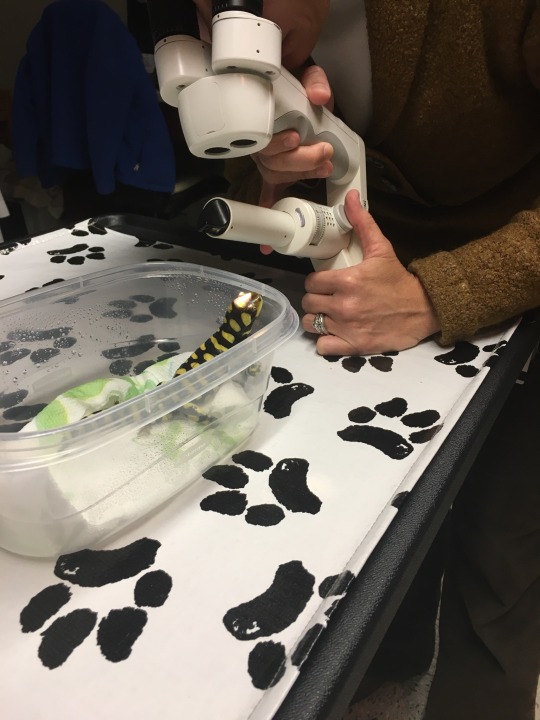
The doc made sure there was no inflammation in the affected eye, which was her biggest concern. After we got the all clear on that she tested his eye pressure with a teeny tiny tonometer, which was very cute. Bunyip tried to eat the light a few times but was otherwise a very good patient. The ophthalmologist called an exotics specialist to talk turkey about salamander eye diseases but the ultimate conclusion was that an infectious cause would likely result in a change in behavior or appetite which I certainly have not seen. His eyes have returned to normal (yay!) so for now I am going to closely monitor Bunyip for another episode of anisocoria or signs of illness. The docs suspect some sort of neurological cause, which is scary but he is young and is behaving normally so let’s keep our fingers crossed!
Just because your pet is small and slimy doesn’t mean they don’t deserve proper care! If you have an exotic pet find a qualified vet you trust and stick with them, it’s always best to get things like this checked out as soon as possible. Our pets are counting on us to give them our best!
3K notes
·
View notes
Text
Several weeks ago a pet skunk came in to see me because it just wasn’t acting right. The skunk had been purchased from a breeder and had lived with the owner for five years. Although normally an indoor pet the owner had built an enclosed area in the back yard so that the skunk could be safely outdoors. When the owner first purchased the skunk it had gotten a rabies vaccine and a clean bill of health from a veterinarian but had not been in to see a vet since then.
I walked into the room and saw the owner with several blood soaked paper towels wrapped around his hand. The skunk was in a carrier on the table growling and biting at the bars. I asked him if he was ok and he said yes, the bite was very minor and it happened all the time. Slowly I approached the carrier and the skunk began screaming and biting the sides of the cage.
“Has anyone else been bitten?” I asked.
“Oh, probably my whole family. He’s never been very nice.”
Slowly I bent down to look into the carrier again and the skunk rammed the front snarling and snapping. I felt drops of saliva hitting me in the face. Gently I explained to the owner that I was extremely concerned this skunk was rabid and his entire family and anyone else that had been in contact with the skunk needed to get to a hospital immediately and get rabies post-exposure treatment. The owner was understandably upset and asked me to please look at the skunk close. Politely I refused and told him there was no way I was going to open that carrier nor expose my staff to a possibly rabid animal. After several more minutes of discussion he agreed to allow me to euthanize the skunk and have it tested for rabies but he wasn’t going to go to the hospital.
“What could happen if it is rabies?” the owner asked.
Very sternly I told him, “You’ll die. There is absolutely no treatment for rabies and the only possible outcome is death. You will die. Your family will die. Anyone who has been bitten or exposed to the saliva will die.”
“Is it expensive?”
“If you have insurance it should cover it. If you don’t, yes it can be expensive. But this is literally a matter of life or death. I understand being concerned about medical bills but the alternative is death.”
The owner said he would think about it. I sent the head off for testing and didn’t think anything more about it.
A few days later I got a phone call from the health department telling me that the skunk was positive for rabies. The phone numbers and information the client had given me, which I included on the submission form to the lab, were wrong and the department could not get in touch with the family to tell them they absolutely needed to get to the hospital. I got a little sick to my stomach thinking about the saliva that had gotten on my face and likely into my eyes as well. Luckily I had already had the pre-exposure vaccinations so would just need to get two booster vaccines and would be fine. If the family did not get medical help soon they would die of rabies. I gave the health department all of the information we had on the clients.
A few days later I got word that a man had gone to the hospital saying he had been exposed to a friend’s skunk that was diagnosed with rabies. Luckily that man was able to give the correct information to the hospital and the health department was able to get in touch with the family and they came in and were all treated for rabies exposure. I don’t think they ever really realized how close they came to dying.
There are a few lessons to take home here:
Skunks don’t make good pets. Leave them in the wild where they belong.
Rabies is not an old timey disease that people used to die from. It’s still here and vaccinating against it is still very important.
Give the proper information when you go to the vet! These people probably gave false information because owning a skunk is illegal where they live but vets aren’t interested in turning people in. We desperately needed to contact them to save their lives.
Finally, rabies is nothing to mess with. There is no treatment; there is nothing that can be done when symptoms begin. It is far better to pay for vaccines than it is a funeral.
33K notes
·
View notes
Photo

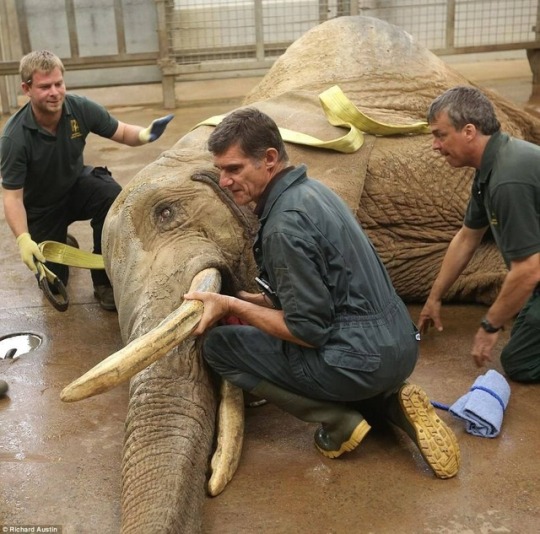



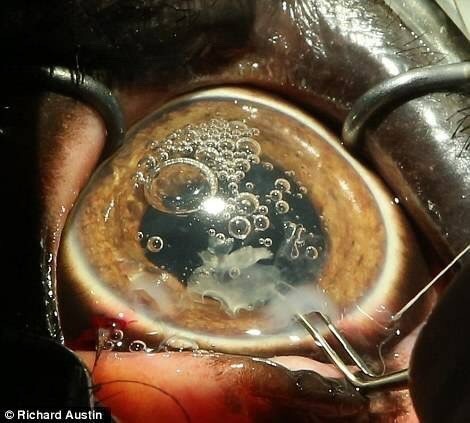
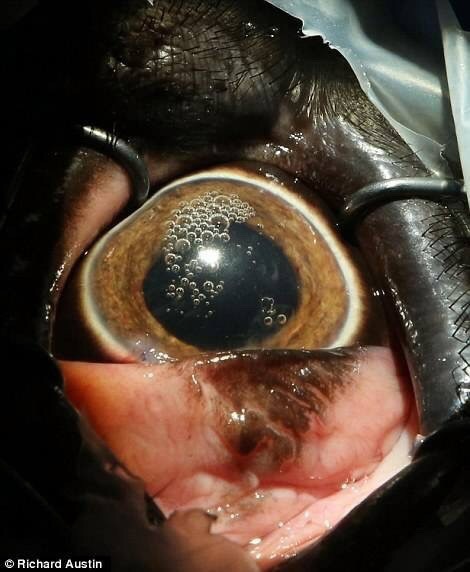

She won’t forget that in a hurry: Elephant rubs her eye in disbelief after cataract op to restore her sight
It was a truly mammoth undertaking, but Duchess the blind elephant will finally be able to see again after receiving what was quite possibly the world’s largest ever cataract operation.
The first ever elephant cataract operation in the UK: Duchess was treated for her for a cataract, in the hopes of regaining sight in one eye
Follow for more
Vet-Trek: The Fauna Frontier
13K notes
·
View notes
Photo
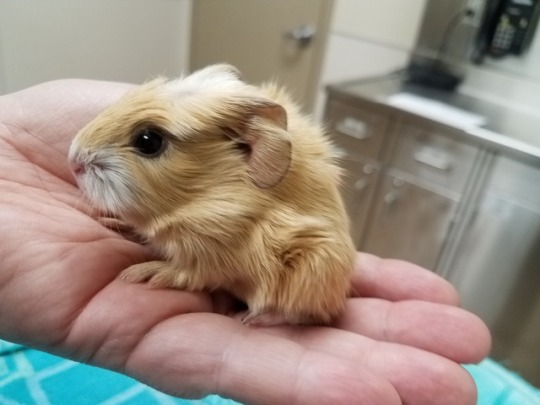
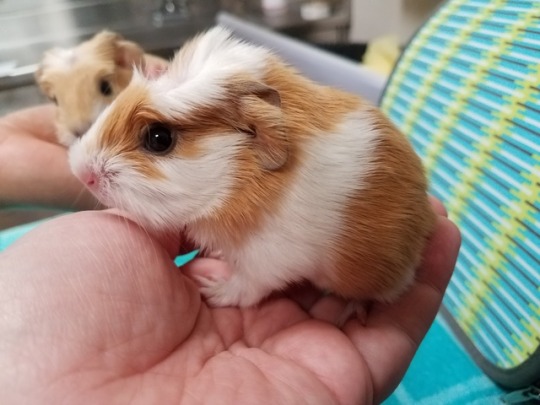
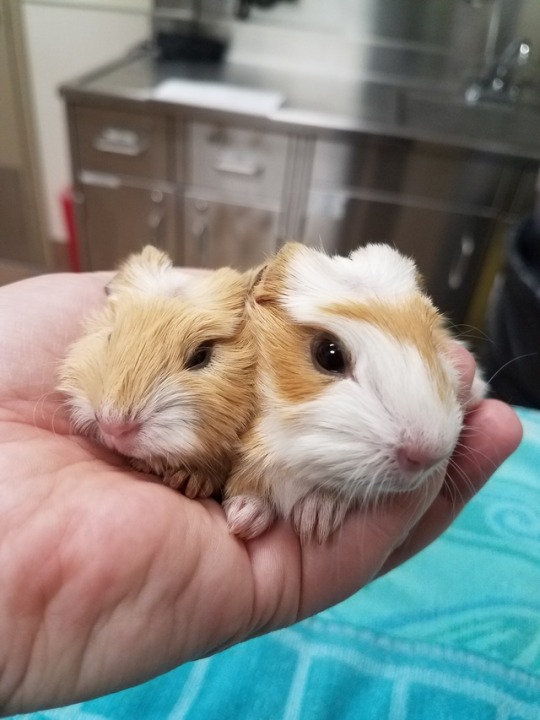
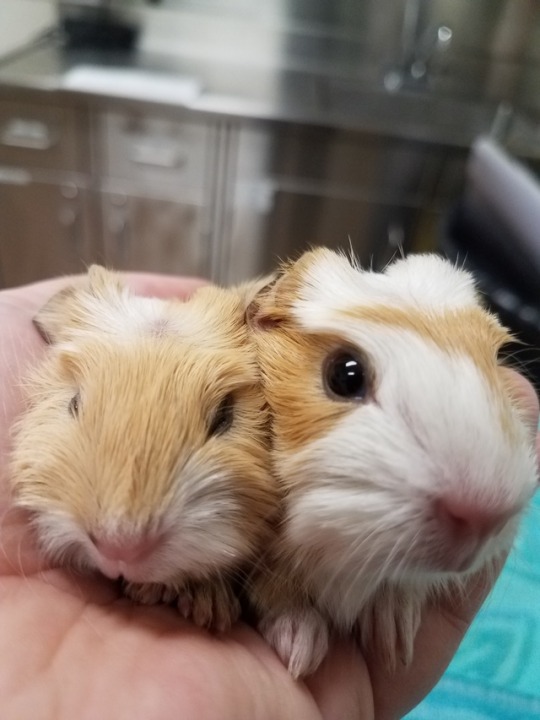

fact: day old guinea pigs are 90% head.
Fact: my job is sometimes the best job ever.
22K notes
·
View notes
Text
Sometimes humans are just the best! A very good (and brave) Samaritan brought this eastern diamondback rattlesnake into the hospital after it was hit by a car. Look at this beautiful angry serpent!
That head wound looked pretty concerning so this baby went for a CT scan to assess the damage to its skull and soft tissue.

It might seem crazy that this wild snake could survive a tire to the head, but rattlesnakes are incredibly tough critters. Their heads are so muscular that when they’re struck by a car they can often survive with minimal damage to the bony structures of the head. In this case, the trauma from the tire forced those impressive facial muscles through the skin without breaking any cranial bones. Fortunately, an incredibly skilled exotics veterinarian was able to surgically repair the damage. Here it is after surgery!
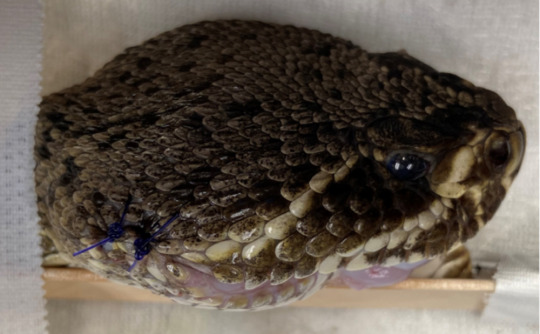
This baby did great after the procedure and recovered beautifully. After several weeks in a wildlife rehabilitation facility, this rattlesnake was well enough to be released into the wild. You gotta love a happy ending! I know venomous snakes can get a bad rap, but just because they’re a little scary doesn’t mean they don’t deserve our love and respect.
23K notes
·
View notes
Video
“A variety of wild animals visiting a water fountain”
(via)
216K notes
·
View notes
Photo

Bored in isolation let’s start this old drama again. You are a bad pet owner if you willfully ignore all the evidence of how bad outdoor cats are to the environment, other pets, humans and cats themselves. And I hope for the sake of your cats you don’t learn that the hard way.
6K notes
·
View notes
